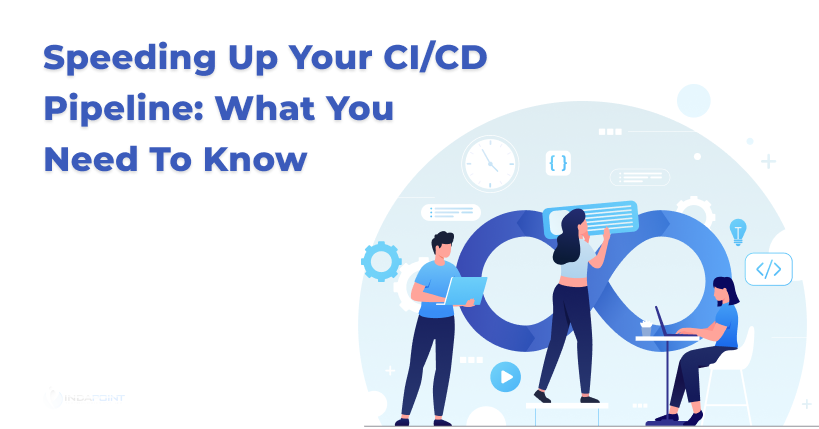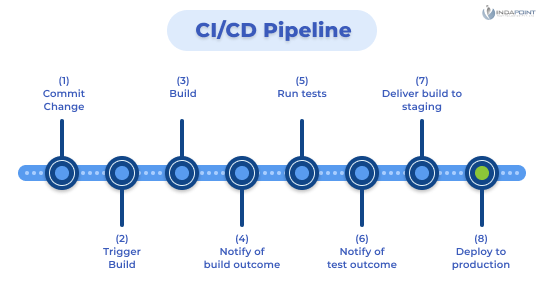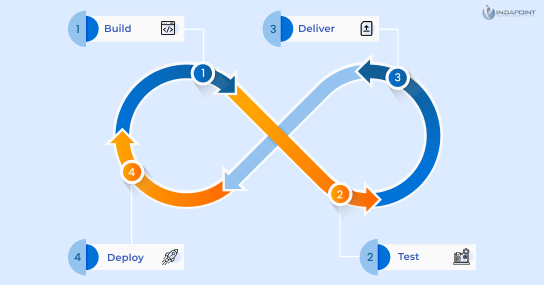Speeding Up Your CI/CD Pipeline: What You Need To Know
September 29, 2022

The contemporary market is a dynamic, ever-expanding, hypermodern setting. Worldwide, tens of thousands of new businesses emerge daily, industries are fundamentally altered by transformational technology, and new business models are paving the way.
Every firm has software interwoven into its internal and external procedures. How does the speed of software delivery affect your entire company? We outline the advantages and fixes for creating a quick and reliable CI/CD workflow.
Teams working on development projects try to improve management and predictability. Regardless of the chosen cloud platform or programming language, it affects all project types.What is CI/CD pipeline?

Programming or framework as-code conveyance from source code to creation is achieved through a CI/CD pipeline. It can be visualized as a set of procedures that must be followed before code can be made available.
The endless combination and consistent conveyance/organization (CI/CD) pipeline comprise the practices featured for the sake of the cycle. It comprises all that you want to test, stage, and send a created programming item, and it is successfully a profoundly robotized technique. Automation is one of the most critical components of every CI/CD pipeline because it speeds up the entire process while maintaining reliability.
The normal work process of a CI/CD pipeline begins with a focus on a CI-empowered approach, which begins a form or a bunch of unit tests. More automated test rounds follow, providing feedback after each round. The software is then deployed to various environments and staging servers, which may entail manual testing. Through continuous delivery or continuous deployment, the approved modifications are made live.
Pipeline types in DevOps
DevOps include agile planning, continuous integration, delivery, deployment, and application monitoring throughout the software development life cycle. Let’s first elaborate on the definitions of CI and CD to understand the current topic better.
Testing and constructing code after each successful merging (code changes) into the version control system is known as continuous integration (CI). We can quickly and efficiently fix any issues we bring into our code by identifying them early in the development process.
Code is built, tested, and prepared for deployment at any time using the continuous delivery (CD) process.
When all the tests pass, we automatically release our product using a subprocess of continuous delivery called continuous deployment (commonly known as CD).
CI/speed CDs: Software development process
The answer to that query is simple: The quicker you can run pipelines, the quicker you can ship your program.
Checking the advantages now.
Minimized feedback loop
When running your CI pipelines, you want to consider the fail-fast strategy. The pipeline should be stopped in progress, and you should get feedback immediately if you introduce any bugs or the code quality is terrible and your tests catch that issue. You can get to deal with an answer significantly more rapidly on the off chance you do this.
Greater organizational agility
Your capacity to provide better software, satisfy your customers, and ultimately increase your business agility will be the result, giving you a significant competitive advantage. Consequently, you must treat it carefully.
A faster pace as a team

A shorter feedback loop for each engineer will impact the team and your velocity in delivering more minor pieces of software more frequently and quickly. Long-running procedures won’t obstruct you, which is a significant advantage in any company.
Build Only the Things You Need
Trying to develop five distinct modules or services at once can frequently cause more problems than it’s worth, despite the temptation to want to push as much as you can with each commit.
As a general rule, each commit should be brief and direct, just like a good email. Projects built on monolithic architecture can benefit significantly by staying with one module at a time.
Prioritize what is required, keep things simple, and concentrate your efforts. Due to code reviews, QA, and testing, large commits can frequently become bottlenecks. The remaining code may become halted while the bug is being addressed if 99.9% of the code is error-free, but a single line triggers an alert.
On the off chance that it seems like somebody is attempting to sell you a microservices design, it is. Even if monolithic strategies have their advantages, in most cases, managing things on a micro and segmented level will result in significant time savings.
A CI/CD Pipeline’s stages

These steps, which begin with the authoring of the source code and terminate in production, make up the development workflow and define the CI/CD pipelines’ lifecycle. Pipeline runs can be scheduled, performed manually by a user, or started after another pipeline has finished running. Pipeline runs are ordinarily begun consequently by an adjustment of the code.
Build
Coding takes place throughout the build phase. This is often carried out by several individuals working as a team and for bigger projects, multiple teams. A Git-based work process is as often as possible used to manage how code is added to the storehouse and put away in a variant control framework (VCS) (likewise called GitOps). Tools that standardize and govern developer environments are beneficial when employed in a pipeline since they help eliminate variations in the code written by different authors. When utilizing cloud-native software, this typically manifests as a docker container.
Test
Testing code increases confidence that the code will function as planned as more resilience is needed and more diverse infrastructure is deployed. Your code can be tested automatically. Performing this manually is typically a repetitious, challenging, and occasionally tiresome procedure. Many teams skipping or underutilizing the testing phase, which is a mistake because the advantages of thoroughly testing code before delivery and deployment can be enormous and help produce high-quality products.
Testing may be divided into several categories; combining these with various tools will result in the highest code coverage and a higher-quality final product.
Deliver
Code is tested before it is packaged as an artifact and uploaded to a repository.
Deploy
The artifact release can be orchestrated at the deploy step. Teams habitually convey to various conditions, including conditions for interior use, such as turn of events and arranging, and creation for end-client utilization. With this paradigm, teams may instantly deploy to a staging environment when a pipeline is activated. The code can be converted into the principal branch and afterward pushed to Production while the organizing climate has been analyzed and supported.
Wrapping Up
Our pipeline configuration was constructed utilizing Amazon EKS bunches, Kubernetes regulators, and Amazon DynamoDB. With such powerful advances, our CI/CD pipeline will further develop programming quality and delivery speed.






